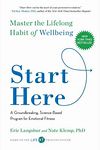- When we resist, we pull away. We fight or flea form those experiences we judge to be bad in our inner and outer world.
Each of us has a unique list of thoughts, sensations, and emotions that cause us to recoil.
- It might be physical pain, discomfort, the thought of dying, the sight of blood, small spaces, or an encounter with a spider in the bathroom.
The tendency for each of us to resist is normal. But if events, circumstances, or even the flow of thoughts isn’t going our way, we tend to resist them in ways disproportionate for what is appropriate.
Re-source: Reactivate
Attachment is a positive force.
- It draws us toward the things we want to preserve or that we desire.
Resistance is the opposite of attachment.
What happens in the brain when we resist? As with attachment, the experience of resistance corresponds to a distinctive pattern of activation in the brain.
- When we shift from attachment to resistance, the pattern of activation in the brain shifts from the left to the right frontal region of the brain.
- The region that is associated with fear and avoidance.
- This pattern of avoidance once played an essential role in human survival.
- It helped us elude hungry and poisonous animals, hostile weather, and other forces of nature that poses an eminent threat to our survival.
- But in the modern world, much of what we resist poses no actual threat to our survival.
Worries about gaining weight, aging or professional failure
- These sources of resistance don’t signal impending death, and yet it often feels as if our life is on the line because these forms of resistance activate the very same neural structures as life threatening emergencies.
craving and resource from “Start Here” – Master the lifelong habit of well-being – by: Eric Langshur and Nate Klemp

